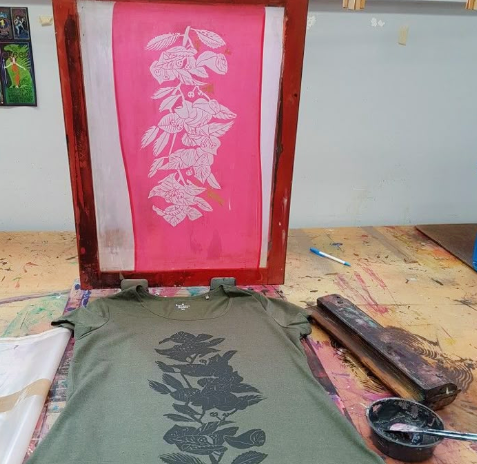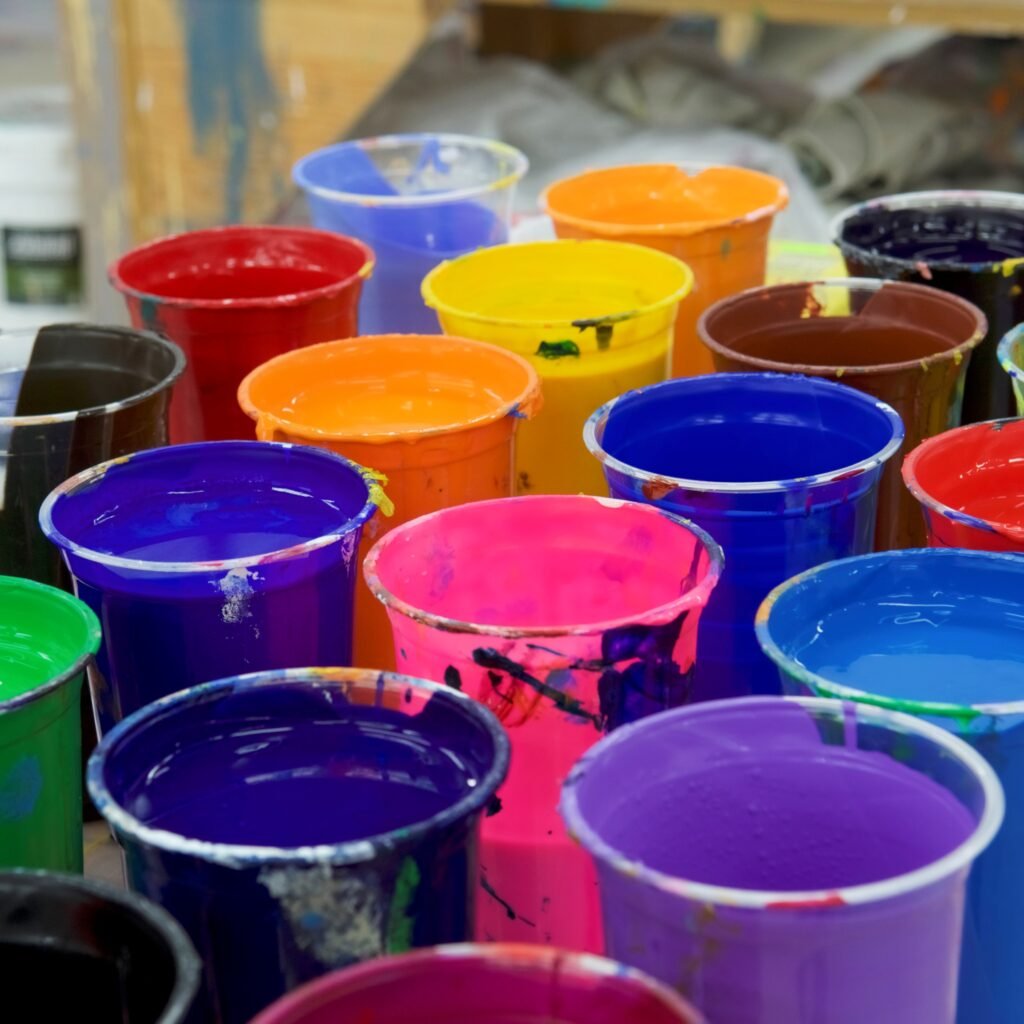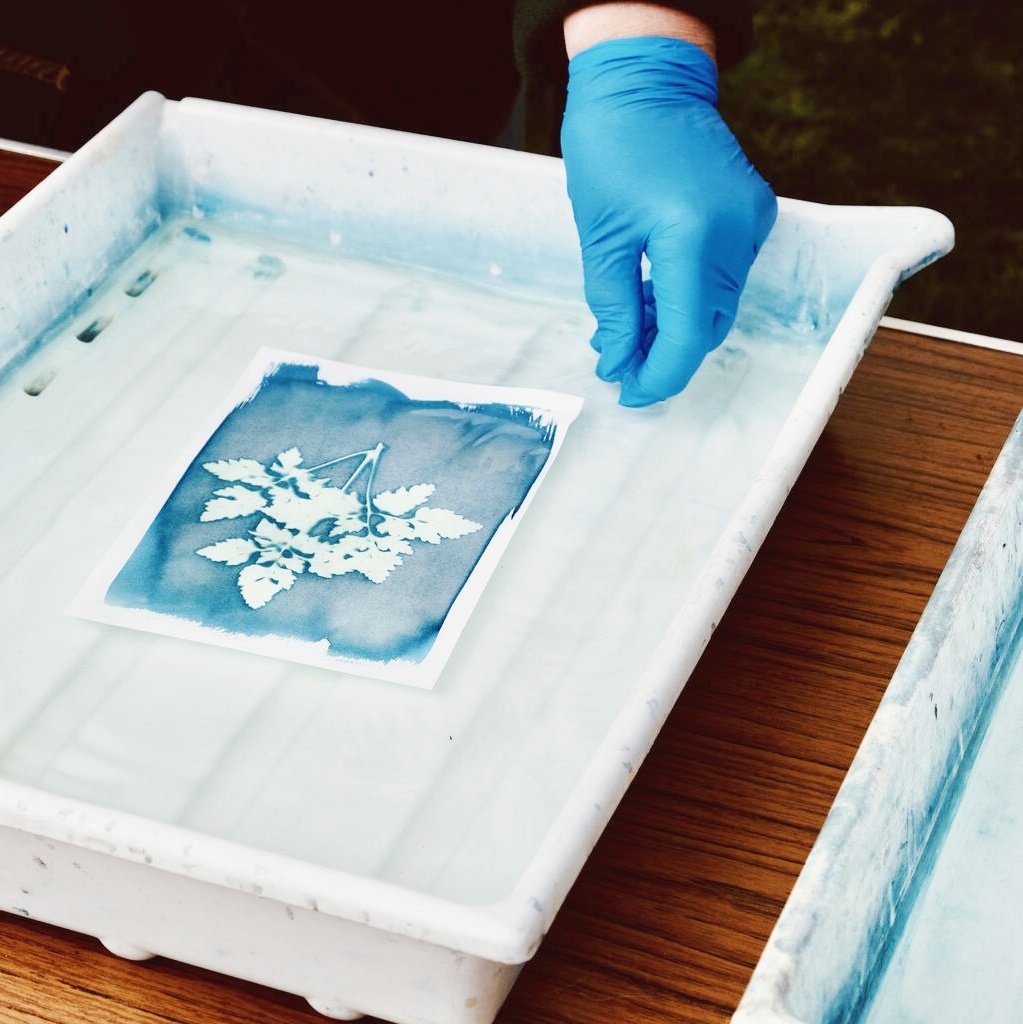Mündəricat
Plastisol Ink is known for its durability and vibrant colors in garment printing
Plastisol Ink vs Water-Based Ink is a great Using eco-friendly inks can be beneficial for the environment and the printing industry. alternative in the printing industry: Which is Best for Screen Printing?
Bu məqalə sizə öyrənməyə kömək edir Plastisol vs water-based ink in screen printing. We will use simple words. We use lists and tables. You will see data and facts. We hope this guide helps you pick the ən yaxşı ekran çap mürəkkəbi ehtiyaclarınız üçün.
This guide has easy words və clear lists. We add a data table with facts and numbers. You will learn about ekoloji cəhətdən təmiz mürəkkəb, the müalicə prosesi, və PVC-siz options. We also talk about brands like Wilflex offers a range of products suitable for both water-based and plastisol inks. is a popular choice in the printing industry for producing high-quality prints on various garments. və Matsui. We mention rules such as Oeko-Tex and ideas from ZDHC və GOTS.
Let’s begin!
1. Giriş
Screen printing has many ink options. Two main inks are plastisol mürəkkəbi və su əsaslı mürəkkəb. Each ink has its own good points and bad points. You may work with pambıq və ya polyester. You may print on sportswear or eco-friendly clothes. This guide will show you the best ink for your need.
- Plastisol Mürəkkəbi is made from PVC and plasticizers. It is thick and needs heat to dry.
- Su əsaslı mürəkkəb is made with water. It soaks into the fabric and feels soft.
Many screen printers choose plastisol mürəkkəbi for ease of use and bright colors. Others choose su əsaslı mürəkkəb to be kind to the earth, consider using eco-friendly additives in your printing process. We will compare both inks.

2. A Quick Look: Comparison Table
Below is a table that shows key facts for each ink:
| Category of inks includes both water-based and plastisol inks for various applications. | Plastisol Mürəkkəbi | Su əsaslı mürəkkəb |
|---|---|---|
| Market Use | 65% of printers use it for its davamlılıq and ease of use. | 28% use it, and it grows 12% each year for being eco-friendly. |
| Ətraf Mühitə Təsir | Has PVC and phthalates. Curing makes 3.2kg CO₂ per 1kg ink. | 80% lower carbon footprint. It is bioloji parçalana bilən if it is APEO-free. |
| Durability is crucial when selecting inks for sportswear garments. | Lasts 50+ washes and keeps bright colors. | Lasts 30-50 washes. Colors can fade if not pretreated. |
| Comfort (Hand Feel) | Feels thick and rubbery. Rated 2.8/5 for softness. | Feels soft and light. Rated 4.5/5 for softness. |
| Opacity on Dark Fabrics | Gives 95% opacity without extra work. | Needs extra layers for 70% opacity. |
| Xərc | Costs $20–$50 per kg. It is cheap to start with. | Costs $30–$70 per kg and may need special dryers like a conveyor dryer. |
| Uyğunluq | 40% do not meet EU REACH rules . | 90% meet Oeko-Tex Standard 100. |
| Microplastics | Releases 1,900 tiny fibers per wash, especially on polyester blends. | Releases almost no microplastics, very safe for nature. |
| Qurutma/Qurma | Needs heat at 320°F for 60–90 seconds. | Air dry in 15–30 minutes or cure at 250°F for 2–3 minutes. |
| Case Study | A sportswear brand saved 25% on ink costs with plastisol. | An eco-apparel company dropped waste costs by 40% with water-based ink. |
3. What is Plastisol Ink?
Plastisol mürəkkəbi is a classic ink in screen printing. It uses PVC and plasticizers. Here are the key points:
- Thick and Viscous: It stays thick until it is cured with heat.
- Yüksək Opaklıq: It gives bright and bold colors even on dark fabrics.
- İstifadəsi asandır: It is forgiving for small mistakes. This makes it good for beginners.
- Canlı Rənglər: You get bright colors, and you can even add special effects like glitter.
- Davamlılıq: It lasts over 50 washes. It does not fade fast.
Bununla belə, bəziləri var downsides:
- Rubbery Feel: The printed design may feel thick and stiff.
- Not Eco-Friendly: It has PVC and phthalates. This is a problem for the earth.
- High Curing Temperature: It needs high heat (320°F) for 60–90 seconds when working with plastisol print. This can use a lot of energy.
Plastisol mürəkkəbi works well for sportswear. It works best on dark fabrics and when you want bright, strong prints. Many printers like brands like Wilflex və Matsui for this ink.
4. What is Water-Based Ink?
Su əsaslı mürəkkəb is a newer type of ink. It mainly uses water as its carrier. This ink has many good points:
- Yumşaq hiss: It soaks in the fabric. The print feels light and is almost not felt.
- Ekoloji cəhətdən təmiz: It is bioloji parçalana bilən. It is also PVC-siz and low in harmful chemicals.
- Breathable: The ink lets the fabric breathe. This is good for clothes like baby wear and organic cotton apparel.
- Smooth Look: It gives a softer, vintage look to the print.
But there are some challenges:
- Longer Drying Time: It takes 15–30 minutes to air dry.
- Lower Opacity: On dark fabrics, you may need extra layers and pretreatment.
- Skill Needed: It can clog screens if not used well. You need more skill to work with it.
For those who care about the earth, su əsaslı mürəkkəb is the choice. It is popular among eco-brands that use organic cotton and other natural fabrics. It also meets rules like Oeko-Tex Standart 100 və ZDHC təlimatlar.

5. Head-to-Head Comparison
Here we compare plastisol vs water-based ink side by side. This will help you see what matters most to you.
A. Durability & Washability
- Plastisol Mürəkkəbi
- Lasts over 50 washes.
- Colors do not fade easily.
- Best for heavy use.
- Su əsaslı mürəkkəb
- Lasts 30–50 washes.
- Colors may fade if the ink is not pretreated.
B. Comfort & Feel
- Plastisol Mürəkkəbi
- Gives a thick, rubbery feel.
- May feel heavy on cotton.
- Su əsaslı mürəkkəb
- Feels soft and light.
- Lets the fabric feel natural.
C. Environmental Impact
- Plastisol Mürəkkəbi
- Contains PVC and phthalates.
- Releases microplastics and has high carbon emissions.
- Su əsaslı mürəkkəb
- edir ekoloji cəhətdən təmiz.
- Has a low carbon footprint and is nearly free of microplastics.
D. Cost Analysis
- Plastisol Mürəkkəbi
- Costs less at $20–$50 per kg.
- Lower ink cost but uses more energy for curing.
- Su əsaslı mürəkkəb
- Costs $30–$70 per kg.
- Must buy special dryers sometimes.
E. Best Use Cases
- Plastisol Mürəkkəbi
- Ideal for bold sportswear.
- Good for dark fabrics.
- Used in high-volume orders.
- Su əsaslı mürəkkəb
- Best for eco-friendly brands.
- Suits organic cotton and baby clothes.
- Ideal for light fabrics and casual wear.
6. Decision Factors: How to Choose
Mürəkkəb seçərkən bunları düşünün 5 points to consider when choosing inks for your garment printing projects.:
- Parça növü:
- Dark fabrics may do better with plastisol mürəkkəbi.
- Light fabrics and organic cotton do best with su əsaslı mürəkkəb.
- Print Longevity:
- If you need prints that last many washes, plastisol mürəkkəbi is the choice.
- If softness is key, try su əsaslı mürəkkəb.
- Budget:
- Plastisol mürəkkəbi is cheaper upfront.
- Su əsaslı mürəkkəb might cost more but saves on waste and energy costs over time.
- Skill Level:
- Plastisol mürəkkəbi works well for beginners.
- Su əsaslı mürəkkəb suits those who have more experience.
- Environmental Rules:
- Know the rules for your market.
- Su əsaslı mürəkkəb meets Oeko-Tex Standart 100 və ZDHC.
- These are key for eco-friendly brands.
7. Common Mistakes to Avoid
Budur bəziləri siyahıları of mistakes you must not do:
- For Plastisol Ink:
- Do not use it for baby clothes. It has harmful chemicals.
- Do not under-cure. This can cause cracks in the print.
- Do not ignore the high energy cost.
- For Water-Based Ink:
- Do not skip the pretreatment on dark fabrics.
- Do not let the ink dry too long on your screen.
- Do not use it if you are just learning; it needs more care.
It is best to plan your work and follow the instructions for each ink.
8. Tez-tez verilən suallar
Budur bəziləri ümumi suallar that can help you choose:
Can I mix plastisol and water-based ink?
No, do not mix. They work best on their own. Mixing can cause poor prints, especially when using opaque pigments that don’t blend well.
Which ink is good for stretchy fabrics?
Plastisol mürəkkəbi works well on stretchy sportswear.
Is water-based ink really eco-friendly?
Yes. It is bioloji parçalana bilən and meets rules like Oeko-Tex Standart 100.
Can you print on organic cotton with water-based ink?
Yes, water-based ink is best for natural fibers like organic cotton.
9. Case Studies
Let’s look at some real hekayələr:
- Sportswear Brand Case:
A sportswear brand used plastisol mürəkkəbi. They saved 25% on their ink cost. The prints lasted well even on heavy use. This shows plastisol mürəkkəbi works great for high-volume orders and dark fabrics. - Eco-Apparel Company Case:
An eco-apparel company switched to su əsaslı mürəkkəb. They lowered their waste disposal cost by 40%. The soft print was loved by their customers. This shows su əsaslı mürəkkəb is a strong choice for eco-friendly brands.
10. Conclusion and Final Thoughts
We looked at plastisol vs water-based ink. Here are the main points:
- Plastisol Mürəkkəbi:
- Pros: Bright colors, high opacity, easy to use, good for sportswear and dark fabrics.
- Eksiler: Thick feel, high energy for curing, not eco-friendly.
- Su əsaslı mürəkkəb:
- Pros: Soft feel, eco-friendly, natural look, good for light fabrics and organic cotton.
- Eksiler: Longer drying time, lower opacity on dark fabrics, more skill needed.
How to Choose?
Think of your fabric, print longevity, budget, skill, and rules. If you work with sportswear or need bold prints at a low cost, try plastisol inks for screen printing. plastisol mürəkkəbi. But if you care about the earth and want a soft print for organic cotton, choose su əsaslı mürəkkəb.
Trend Alert: Some designers like to use hybrid inks. These try to join the good points of both ink types. They can be a good choice if you want to keep the bright feel and lower the harm to our earth.
When you make a choice, use the facts we showed in our table. Know that plastisol vs water-based ink is not just about cost. It is about davamlılıq, comfort, mühit, və ease of use.
Always follow the screen printing kit instructions. Use the right settings on your dryer or conveyor. Clean your tools well. This care helps you make the ən yaxşı ekran çap mürəkkəbi last.
Quick Recap: Key Points and Actions
- Know Your Ink:
- Plastisol mürəkkəbi is thick. It is used for bold and bright prints.
- Su əsaslı mürəkkəb feels soft. It is good for natural fabrics and the earth.
- See the Data:
- Use our table to compare facts like wash durability, cost, and cure time.
- Consider the Rules:
- Brands must follow Oeko-Tex Standart 100 və ZDHC.
- Eco brands choose water-based to meet these rules.
- Action Steps:
- Check your fabric type and print needs.
- Decide if you want a thick feel or a soft feel.
- Balance your budget with ink cost.
- Practice with one type first if you are new.
- Follow care steps to avoid mistakes.
- Use Good Brands:
- Look for inks from Wilflex və Matsui.
- Read reviews and guide books to know more.
Son Düşüncələr
We hope this guide helps you clear the haze of ink choices in screen printing. Your project may be in sportswear or eco-friendly lines. Use this guide to match the right ink to your need. The facts show that plastisol mürəkkəbi is strong and cost-effective. Su əsaslı mürəkkəb is soft, eco-friendly, and better for nature.
Print well. Print smart. And choose the ən yaxşı ekran çap mürəkkəbi for your art and business. Enjoy the fun of screen printing and make beautiful prints that last.
Thank you for reading this guide. We wish you the best in your screen printing work!


